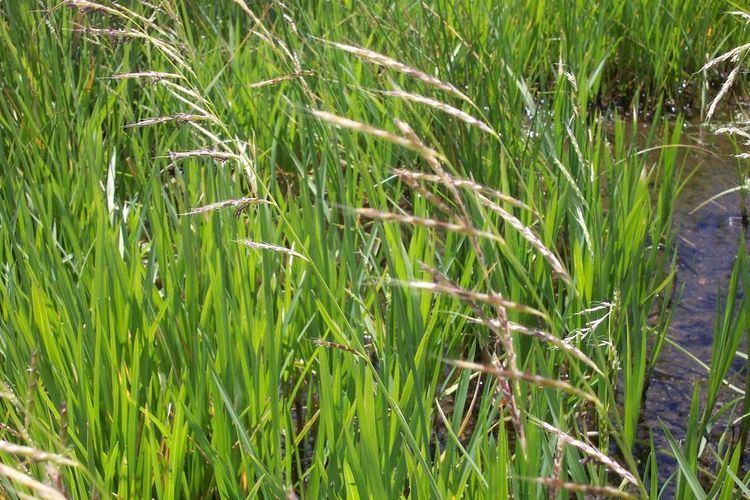Rank Species | ||
 | ||
Pleuropogon oregonus is a species of grass known by the common name Oregon semaphoregrass.
Contents
It is endemic to Oregon in the United States, where there are only two populations. It has been called "one of the rarest grasses in North America."
Description
Pleuropogon oregonus is a rhizomatous perennial grass, producing stems up to 90 to 95 centimeters tall. The erect stems are spongy in texture. The ligule may be a centimeter long. The leaves are up to 17 centimeters long.
The inflorescence is a raceme bearing 6, 7, or 8 spikelets. The spikelets are up to 4 or 5 centimeters long and stick out from one side of the raceme. The spikelets are green with a purple tinge and each contains up to 14 flowers. Flowering occurs in June and July.
Distribution
Pleuropogon oregonus is a grass has been considered rare as long as it has been known. In the 1970s no populations were known to be extant and the grass was feared extinct. Today there is one population each in Union County and Lake County.
It is a wetland plant that grows in swampy meadows and by streams.
Associated species include Beckmannia syzigachne, Deschampsia caespitosa, D. danthonioides, Glyceria borealis, Hordeum brachyantherum, Carex athrostachya, C. nebrascensis, C. saxatilis, and Eleocharis palustris.
This plant is found only on private land, but part of one of the populations is on land managed by The Nature Conservancy. Threats to the species include heavy grazing, but it is thought that light grazing may be beneficial as livestock remove excessive grass buildup. Other threats include agricultural activity and changes in the local hydrology.
